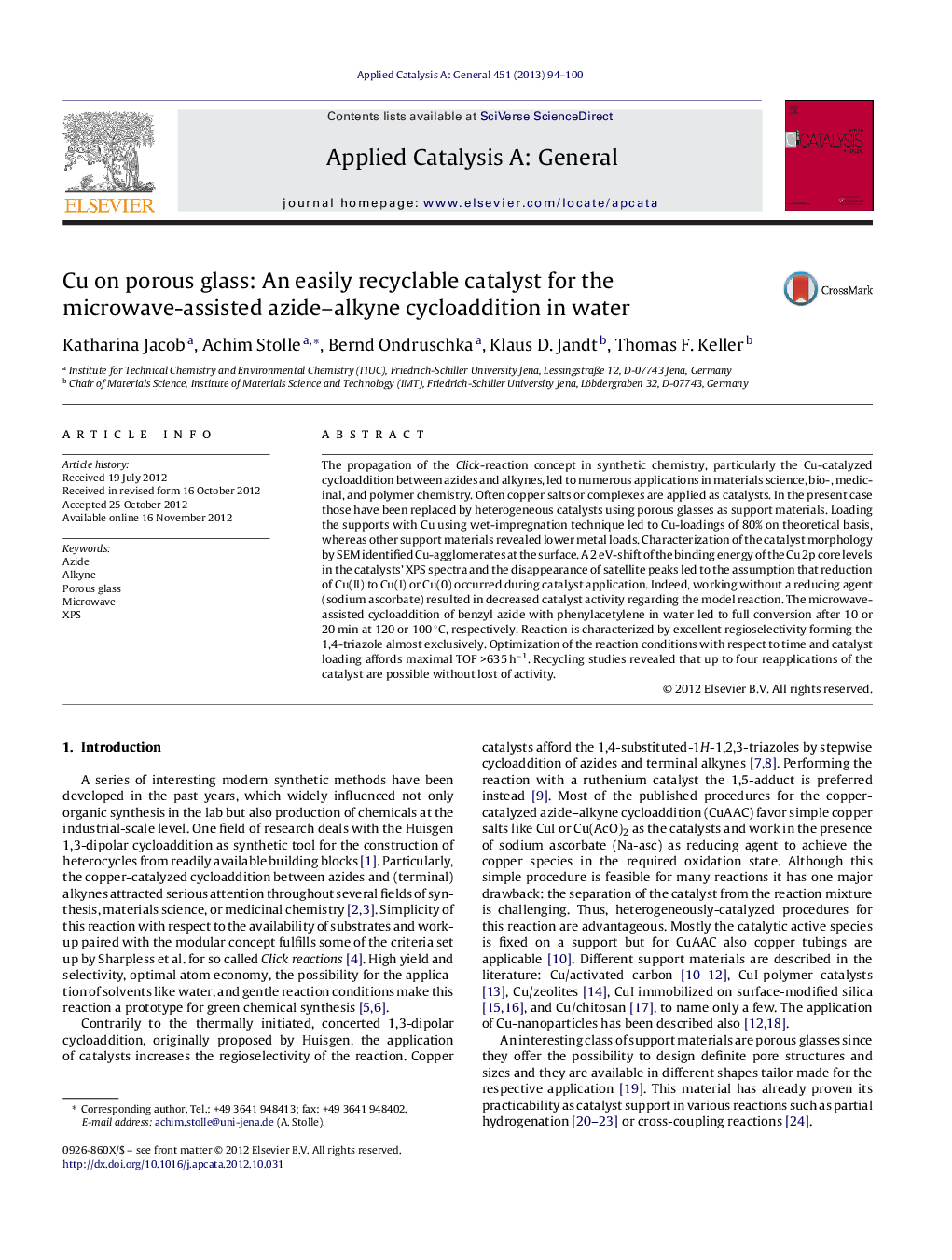| کد مقاله | کد نشریه | سال انتشار | مقاله انگلیسی | نسخه تمام متن |
|---|---|---|---|---|
| 40556 | 45858 | 2013 | 7 صفحه PDF | دانلود رایگان |

The propagation of the Click-reaction concept in synthetic chemistry, particularly the Cu-catalyzed cycloaddition between azides and alkynes, led to numerous applications in materials science, bio-, medicinal, and polymer chemistry. Often copper salts or complexes are applied as catalysts. In the present case those have been replaced by heterogeneous catalysts using porous glasses as support materials. Loading the supports with Cu using wet-impregnation technique led to Cu-loadings of 80% on theoretical basis, whereas other support materials revealed lower metal loads. Characterization of the catalyst morphology by SEM identified Cu-agglomerates at the surface. A 2 eV-shift of the binding energy of the Cu 2p core levels in the catalysts’ XPS spectra and the disappearance of satellite peaks led to the assumption that reduction of Cu(II) to Cu(I) or Cu(0) occurred during catalyst application. Indeed, working without a reducing agent (sodium ascorbate) resulted in decreased catalyst activity regarding the model reaction. The microwave-assisted cycloaddition of benzyl azide with phenylacetylene in water led to full conversion after 10 or 20 min at 120 or 100 °C, respectively. Reaction is characterized by excellent regioselectivity forming the 1,4-triazole almost exclusively. Optimization of the reaction conditions with respect to time and catalyst loading affords maximal TOF >635 h−1. Recycling studies revealed that up to four reapplications of the catalyst are possible without lost of activity.
Figure optionsDownload high-quality image (204 K)Download as PowerPoint slideHighlights
► Loading of porous glasses with Cu led to catalysts with high activity in CuAAC.
► The active specie is Cu(I) or Cu(0) formed by reduction with sodium ascorbate.
► Catalyst characterization with SEM identifies Cu-agglomerates at the glass surface.
► Cu/porous glass materials can be reused up to 5 times without decrease of activity.
► Catalysts revealed high stereoselectivity forming the 1,4-triazole mostly >99%.
Journal: Applied Catalysis A: General - Volume 451, 31 January 2013, Pages 94–100